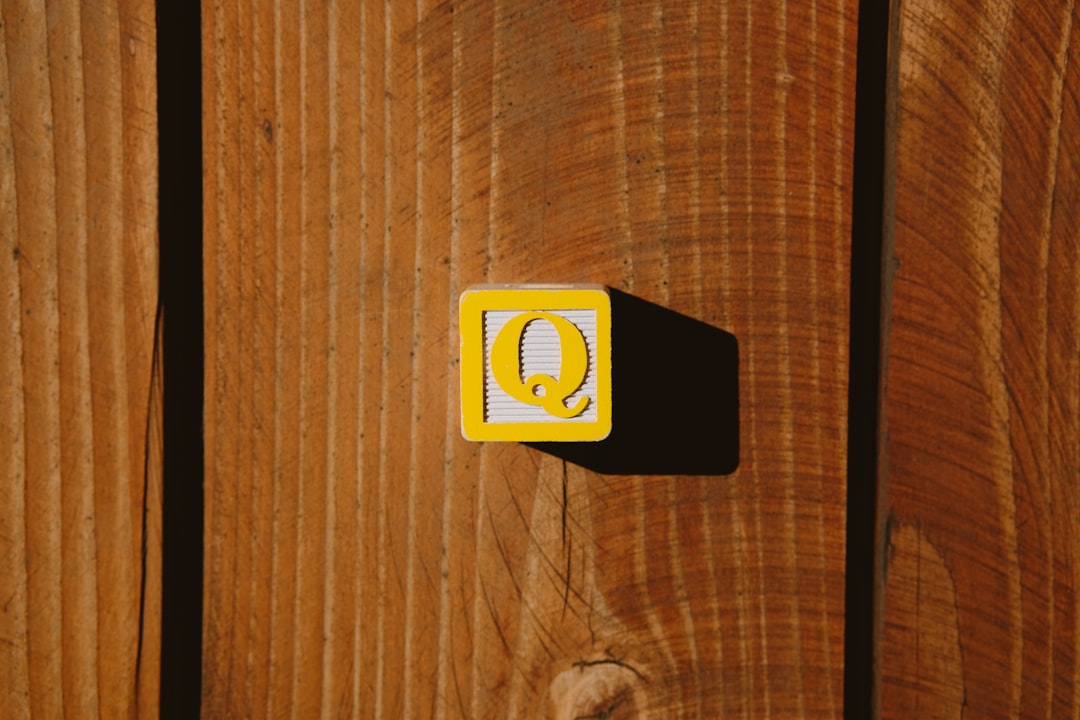

Engage prospects with a scan and streamline customer engagement with FREE QR code marketing tools by Sona – no strings attached!
Create a Free QR CodeFree consultation

No commitment

Engage prospects with a scan and streamline customer engagement with FREE QR code marketing tools by Sona – no strings attached!
Create a Free QR CodeFree consultation

No commitment
The recruiting landscape is rapidly evolving as companies seek to capture the attention of high-quality candidates in an increasingly competitive market. Traditional job boards offer vast reach but often struggle to bridge the gap between offline interactions and digital engagement, resulting in missed connections and inefficiencies in lead capture. Manual processes, such as printed flyers at recruiting fairs, static advertisements, or tedious email follow-ups, are slow and hard to track, which can dampen the candidate experience.
Many high-value prospects who show strong intent go completely untracked if they never submit a form or leave contact information, making it nearly impossible for recruiting teams to follow up or personalize future engagement. QR codes are changing the game for job boards, providing a simple, app-free way for candidates to interact with job postings or apply instantly directly from print and physical media.
For growth marketers and HR teams, QR solutions streamline recruitment marketing, eliminate analog bottlenecks, and deliver measurable data to optimize the hiring funnel. By embedding QR codes into job postings, event collateral, and business cards, job boards can drive higher-quality leads, enhance candidate journeys, and seamlessly integrate offline touchpoints into digital talent acquisition strategies.

Recruiters often face the frustration of well-attended job fairs or print campaigns generating significant attention, yet failing to translate that interest into tracked applications or follow-ups. Outdated methods like handed-out resumes or paper sign-up sheets frequently result in high-value prospects slipping away unrecorded. Manual data entry also introduces errors, slows down response times, and creates a fragmented picture of candidate journeys.
By replacing analog workflows with QR-enabled interactions, job boards can reduce friction and gain visibility. Scans can route to mobile-first application forms in seconds. The result is a cleaner funnel, fewer lost leads, and faster time to interview. A simple example illustrates the impact: booth visitors at a career fair scan a code that loads a two-minute application. Their data is captured in the ATS immediately, enabling recruiters to follow up before the event ends.
With QR codes, job boards can:
This shift from paper to digital empowers recruitment marketing teams to optimize every candidate interaction and reduce revenue lost from missed or untracked opportunities. Dynamic QR platforms like Sona QR also unlock multivariate testing and insight into engagement by channel, making it easier to allocate budget to what is working.

Job boards often grapple with converting strong offline awareness, such as event foot traffic or eye-catching print ads, into actionable digital leads. Time and time again, candidates see compelling signage or materials but are left unsure how to take the next step, or their interest is lost because there is no immediate, trackable path to application. As a result, a significant portion of warm prospects remains invisible and unpursued.
QR codes solve this pain point by creating instant onramps from physical media to digital experiences. Candidates can express interest at the exact moment motivation peaks, which shortens the distance from curiosity to conversion. In a market where speed-to-contact correlates with offer acceptance, this improvement is pivotal.
QR codes matter because they:
By integrating these QR-based tools, job boards gain critical visibility into previously unknown traffic and can quickly identify candidates who are highly engaged, even if they do not immediately submit a full application.

A persistent challenge for recruiters is deploying the right QR code for the right context. When a general homepage link appears where a direct apply form is needed, candidates can become disengaged and tracking is compromised. A better approach is to match the code format to the action you want.
Leading job boards employ several QR code types for recruitment marketing:
Modern dynamic QR codes allow destinations to be updated without new print runs and support granular tracking. For example, a code on a campus poster can be switched from a summer internship page to a fall graduate program page, while keeping data continuity intact.

One of the most prevalent barriers to growth for job boards is concentrating QR usage in a single channel. When codes live only on event booths or just inside one brochure, marketers lose visibility into multi-channel journeys and miss incremental conversion opportunities. The goal is to meet candidates wherever they encounter your brand, then deliver a consistent action path.
Growth accelerates when job boards strategically deploy QR codes across:
Each of these placements bridges offline interest to online engagement. Over time, you build richer talent pools, learn which physical assets generate the strongest signals, and improve both content and outreach cadence.
QR codes are versatile across the recruiting journey. The key is to align each placement with a clear action and a compelling destination so scanners know exactly what happens next.
High demo interest often remains unconverted when there is no easy mechanism to reconnect with undecided candidates. QR-driven retargeting campaigns like Intent‑Driven Retargeting can re-engage those who scanned but did not apply, using tailored emails or ads that reflect the job family they browsed.
Another pain point for job boards is the difficulty of building segmented, high-intent audiences for retargeting. Anonymous traffic is common, and scan activity frequently sits outside the recruitment tech stack. Leads stall not because they are unqualified, but because follow-ups are delayed or generic.
Every QR scan is a discrete signal of intent. With dynamic codes tied to specific jobs, events, or locations, you can infer context and personalize at scale. A university career fair scan maps to entry-level interest, while professional association conference scans often indicate senior or specialized roles. This insight translates into more relevant nurture tracks.
To build better audiences:
When this structure is in place, retargeting becomes timely and relevant. Instead of one-size-fits-all blasts, your campaigns mirror candidate interests, which can lift application completion rates and improve interview show rates.
Disconnected campaigns and data silos often produce inconsistent messaging and a fragmented candidate experience. Without connecting QR engagement across channels, it is hard to attribute results properly or maintain momentum from first touch to application.
QR codes act as connectors across offline and digital campaigns. They gather first-party data from physical placements, unify reporting, and make it easier to deliver the right message on the right channel at the right time. A connected approach aligns recruiting, marketing, and field teams around a single source of truth.
Here is how QR codes enhance a broader recruiting strategy:
When integrated via a centralized platform such as Sona QR, scan data flows into your CRM and analytics stack. This builds continuity across the buyer journey, from first scan to offer accepted, while giving teams a common set of metrics for decision making.
A structured playbook ensures that QR campaigns translate into measurable recruiting outcomes. Use the following steps to plan, launch, and optimize for the highest impact, especially when multiple teams or external partners are involved.
The checklist below covers goal setting, format selection, creative best practices, deployment, and optimization. Refer back to it before each event, print run, or regional campaign to maintain consistency and quality across your program.

Lack of data visibility is a recurring pain point for job boards. When scans, applications, and subsequent engagement are not connected, it becomes difficult to see what truly drives top-of-funnel growth and bottom-line hiring outcomes. Offline interest is easily overlooked, and teams may invest in channels that are not contributing to hires.
A robust analytics approach links every scan to downstream activity. This includes form completions, interview scheduling, and offers. With identity resolution, even anonymous scans can be matched to known candidates later in the journey, providing a fuller view of influence and ROI.
With a platform like Sona QR and Sona.com, recruitment teams can:
This data-driven approach reduces wasted effort, revives stalled candidates, and empowers job boards to continuously improve recruiting effectiveness. Over time, you will know which messages, placements, and job families benefit the most from QR-driven engagement, and where to double down.
A few best practices can dramatically lift scan rates, application starts, and follow-up quality. Focus on clarity, context, and continuity across the candidate journey, then let the data guide creative and budget decisions.
Start small with a single event or print run, then expand into a standardized playbook. As you learn which assets convert and which segments respond, you can scale with confidence and keep your team aligned.
By closing attribution gaps, broadening channel reach, and automating follow-up, job boards can minimize missed connections and maximize their recruitment pipeline. These repeatable habits turn QR codes from a tactic into a reliable growth lever.
Despite advances in recruitment technology, many job boards still struggle with leads falling through the cracks when offline and digital activities are not fully connected. QR codes address these blind spots by turning every physical surface into a digital entry point, surfacing anonymous interest, and enabling personalized follow-up at speed. Teams gain the ability to attribute scans to outcomes, prioritize the most engaged segments, and refine messaging based on real behavior.
As talent acquisition grows more competitive, QR solutions give job boards the precision and scalability required to compete for top candidates. When integrated with your ATS, CRM, and analytics stack, they deliver a modern, accountable recruitment experience from first scan to hire. Start by equipping your next event or print campaign with dynamic QR codes, measure the lift in scanned interest and completed applications, and use those insights to scale what works. With tools like Sona QR and Sona.com, you can manage codes centrally, connect engagement to pipeline, and build a measurably better hiring engine. Start creating QR codes for free.
QR codes have revolutionized the job boards industry by transforming passive listings into dynamic lead-capturing tools. They enable recruiters and employers to seamlessly acquire high-quality candidates, deliver streamlined application experiences, and gather real-time insights on engagement. Imagine instantly knowing which job postings attract the most interest and being able to optimize your recruitment strategy on the fly.
With Sona QR, creating dynamic, trackable QR codes is effortless. Update your campaigns instantly without the hassle of reprinting, connect every scan to candidate data, and measure which channels yield the best applicants. This means smarter hiring decisions, faster candidate acquisition, and a recruitment process that truly works for you.
Start for free with Sona QR today and turn every scan into a qualified lead, a completed application, or your next great hire.
You can embed QR codes in print materials and event collateral to direct candidates to mobile-optimized application forms, enabling instant, app-free applications and real-time capture of candidate data.
QR codes close offline to online gaps, improve speed and simplicity of applications, provide dynamic flexibility to update destinations, unlock detailed tracking, lower costs, and scale campaign reach faster.
Choose the QR code type that matches your goal, such as web links to job listings or application forms, customize its design and call to action for clarity, test its scannability, then deploy it across high-impact channels.
Job boards use QR codes to capture candidate interest from offline sources, track engagement, automate follow-ups, and integrate data with ATS and CRM systems to identify and prioritize high-intent candidates efficiently.
Best practices include assigning unique QR codes per asset for precise tracking, attaching UTM parameters for analytics, automating follow-up communications, educating staff and candidates on QR benefits, and iterating campaigns based on data.
Use Sona QR's trackable codes to improve customer acquisition and engagement today.
Create Your FREE Trackable QR Code in SecondsJoin results-focused teams combining Sona Platform automation with advanced Google Ads strategies to scale lead generation

Connect your existing CRM

Free Account Enrichment

No setup fees
No commitment required

Free consultation

Get a custom Google Ads roadmap for your business






Launch campaigns that generate qualified leads in 30 days or less.
